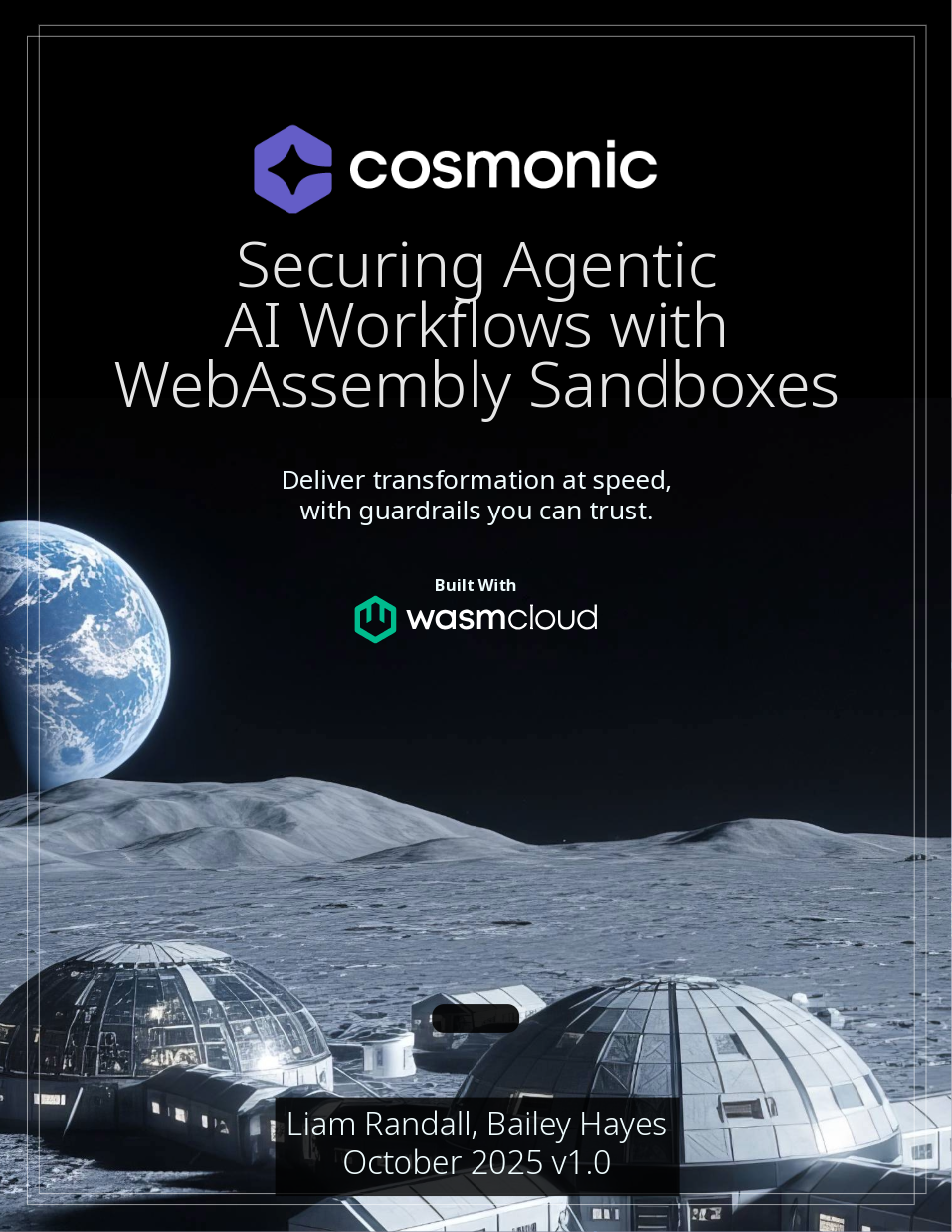Works with:















Protect Against
Agentic Specific Threats
The non-deterministic input and outputs of large language models - unbounded inputs, stochastic reasoning, and variable outputs, creates agentic specific risks that increase uncertainty and exposure across AI workflows.
Sandbox MCP is designed to address the
OWASP Top 10 for LLM and GenAI Applications
Prompt Injection
Build secure sandboxes that limit MCP Interactions with fine-grained capability-based permissions.
Data Exfiltration
Virtualize resources such as filesystems to provide scoped access to local resources.
Lateral Movement
Isolate environments by integrating with existing Ingress/Egress and network controls.
How Does it Work?
From OpenAPI Specification to Secure MCP in Production, Instantly
OpenAPI Specification
Start with any standard OpenAPI specification as a starting point.

Generate Sandboxed Component
Automatically generate your componentized MCP server—later, customize your own templates.
Iterate
Just write your business logic—quickly design your components with idiomatic integrations into VS Code.
Deploy Securely on K8s
Deploy on open source, foundation-controlled CNCF wasmCloud—or for a simpler enterprise option, use Cosmonic Control.


















Secure by Default
Containers
Containers rely on broad Linux kernel syscalls and shared host resources, making it harder to achieve true least-privilege isolation and increasing the attack surface.
With broad adoption and implementation they are the backbone of today's enterprise.
WebAssembly Components
WebAssembly components enforce capability-based security and fine-grained sandboxing, creating minimal, well-defined execution environments that align with the principle of least privilege and reduce lateral movement risk.
The foundation of modern edges and platforms they offer incredible trade offs on your platforms.

Containers
Components
MBs to GBs
~100 per Kubernetes node
Size
KBs to MBs
10,000s per host
Cold Starts, High cost of idle infra
Start Time > Network Request
Cold Start Time
Zero cold starts, Autoscaling
Start time < network request
5,000 Teams patch same 1 vuln.
Maintenance
1 Team patches 5,000 Apps at once
Tight coupling to environment
dependencies built at build time
Portability
One app deployed on Cloud, On Prem, and Edge
Established, Full App Support
Lift and Shift
Emerging, Language Dependent
Batteries
Included
Sandbox MCP enbraces the latest MCP standards to generate:
OpenAPI Specs to MCP
Instantly generate sandboxed MCP servers that expose your APIs through secure, contract-driven WebAssembly interfaces from your existing OpenAPI Specifications.
Observability
With built-in support for OpenTelemetry, dashboards and more—traces, logs, and metrics are a breeze.
Secure Virtual Capabilities
Leverage WebAssembly’s ability to virtualize contract-driven APIs and virtual filesystems, enabling isolated components to interact safely through precisely defined, policy-enforced boundaries.
Portability
Sandbox MCP makes it easy to run MCP servers on-premises, in the cloud, or anywhere it makes sense. Native K8s support makes enterprise adoption simple.
Authentication
Secure applications effortlessly with built-in authentication using API Keys, OAuth 2.0, Mutual TLS, and JSON Web Tokens for safe, ready-to-use access control.
Sandboxed MCP
Secure capability-driven sandboxes with CNCF wasmCloud limit the impact of LLM prompt injection, data exfiltration, and lateral movement.
Isolation
Accelerates Innovation
The powerful non-deterministic inputs and outputs of Agentic AI Workflows drive increased risk of exploitation - LLM Prompt Injection, Data Exfiltration, the risk of Lateral Movement, and more.
With this White Paper understand why this happens on today's infrastructure and how secure, capability driven WebAssembly Sandboxes can mitigate the security risks today.
Deploy Now On
Cosmonic Control
SandboxMCP builds standard WebAssembly Components - Cosmonic make it easy to deploy, scale, and operate them
Run Instantly.
Scale Effortlessly.
Cosmonic Control offers AI teams a production-ready platform for running WebAssembly Components on Kubernetes - including MCP. With tight integration across CI/CD, operations,observability, and network ingress/egress, it ensures scalable, secure, and reliable execution for complex agentic workflows.
Security Built In, Not bolted On
Cosmonic Control applies capability-driven isolation to every WebAssembly component, enforcing least privilege at runtime. You keep your existing Kubernetes guardrails (RBAC, admission, policies) while adding a tighter zero-trust boundary around application code.
Run More with Less: Cost-Efficient Compute
Components cold-start in microseconds and scale to zero, so redundancy doesn’t mean paying for idle pods. Cosmonic manages mulit-tenant CNCF wasmCloud hosts within K8s namespaces, respecting segmentation and policy. You can spread workloads across regions/zones without coupling reliability to always-on resources.
Enterprise-Grade Integrations
Cosmonic integrates deeply into your existing pipelines, operational controls, observability stack, and ingress/egress. Operators and CRDs give you declarative control of clusters, host groups, and workloads directly through kubectl, GitOps, and HPAs.
First Class Observability, Built In
Cosmonic supports OpenTelemetry and exports metrics, logs, and traces for both platform and component layers, giving clean separation and faster anomaly detection.
Containers and Components
Keep containers for what they do best and introduce WebAssembly where security and latency matter most. Cosmonic runs CNCF wasmCloud inside containers so both artifacts share governance, policies, and tooling.












